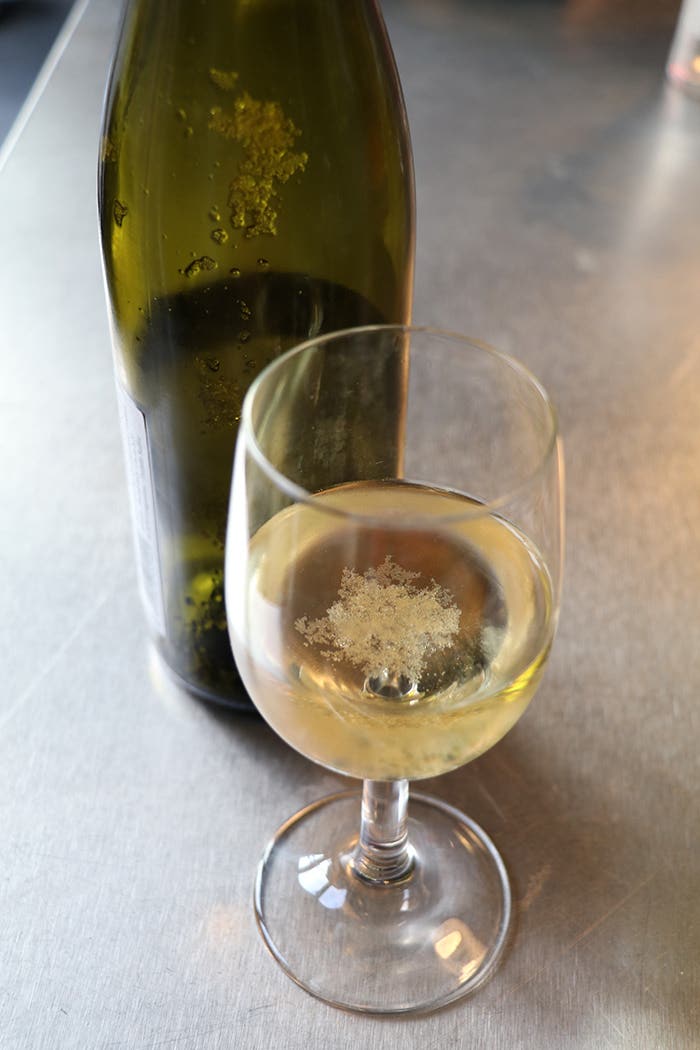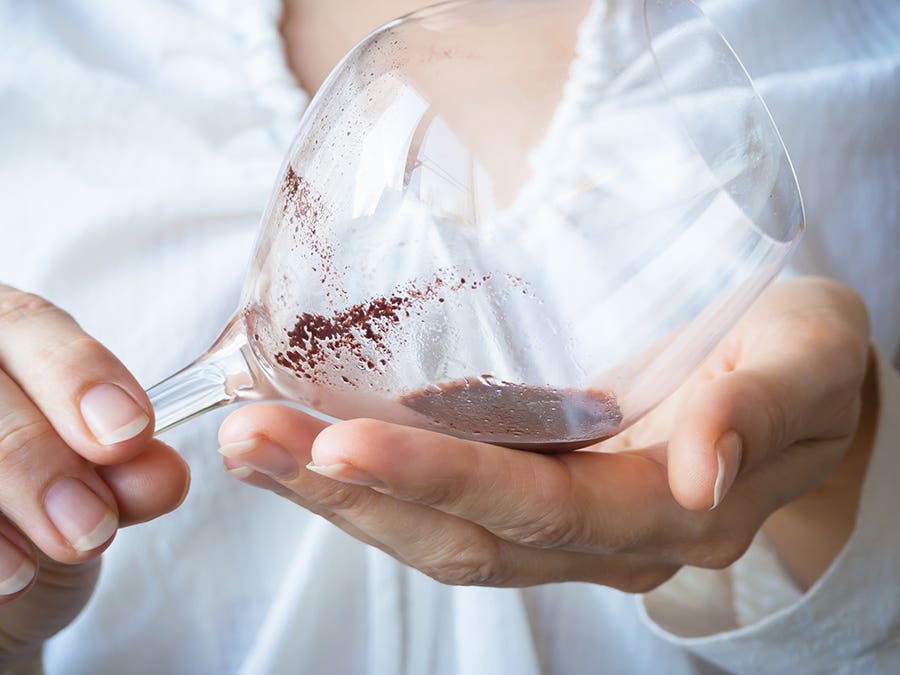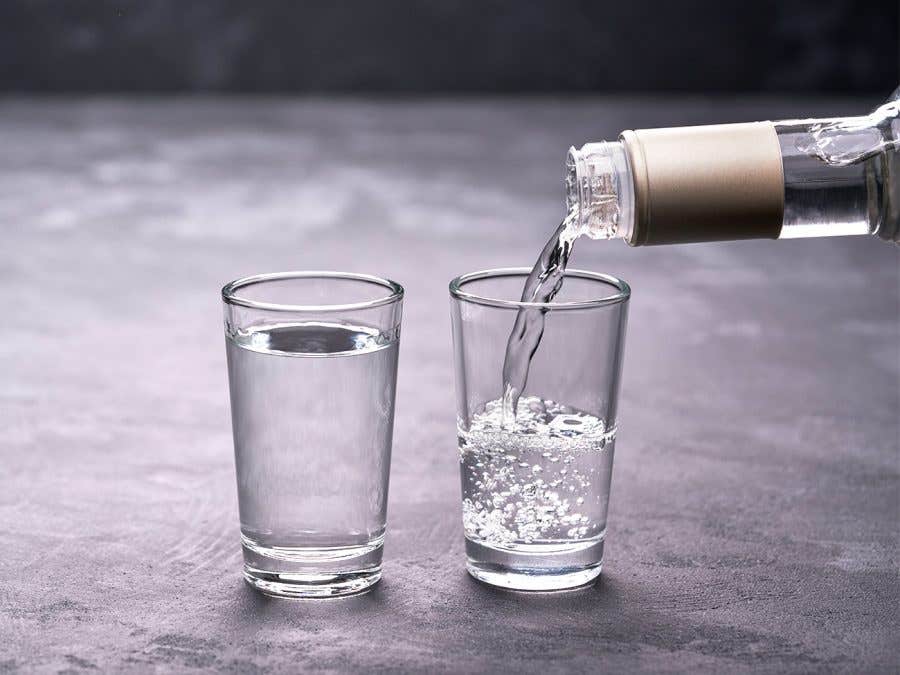Sediment 101
Wine sediment is a completely natural occurrence – it’s essentially just leftover grape bits. These wine lees (or dregs) are simply part of the winemaking process and are not harmful in any way, nor do they affect a wine’s taste. Overall mouthfeel may be compromised if you happen to swallow a significant amount of sediment, but that’s all – and it’s easy enough to avoid gulping down sediment.


Tartrate crystals
These diamond-like structures form when tartaric acid (naturally present in wine) binds with potassium. When their concentration level is high, these crystals grow and precipitate, usually when they are exposed to cold conditions.
Although tartrate crystals are usually more prevalent in white wines, they can occur in red wines too.
Tartrate crystals
These diamond-like structures form when tartaric acid (naturally present in wine) binds with potassium. When their concentration level is high, these crystals grow and precipitate, usually when they are exposed to cold conditions.
Although tartrate crystals are usually more prevalent in white wines, they can occur in red wines too.
Gritty or powdery deposits
These particles are made up of multiple solid molecules found in wine, such as tannins and phenolic compounds, or even yeast cells produced during fermentation. During fermentation, solids are agitated in order to keep them in suspension. This is notably due to the carbon emissions that result from the sugars transforming into alcohol. After fermentation, these particles fall to the bottom of the tank, where most are eliminated during racking, a process that consists of siphoning wine must from one container to the next, so as to leave any sediment behind.
What is filtration? What is fining?
Racking does not rid a wine of all its sediment, which is why winemakers regularly use filtration and fining to further clarify wines. Filtration consists of pouring the wine through a thin filter, while fining is the process of adding a substance to the wine – such as egg whites, milk, fish or pea proteins. The aforementioned substances then adhere to the unwanted wine solids, and are dragged down to the bottom of the tank.
Natural wines are currently very much in demand, and natural winemakers avoid any procedures liable to affect a wine’s integrity – including filtration and fining. Wines that have not undergone filtration or fining (whether they be red, rosé, white or even orange) will obviously contain more solids, and thus, more deposits. However for some, the presence of solids, or the somewhat gritty nature of these wines, is actually what makes them so charming.
How to avoid getting sediment in your glass
You can always gently transfer the wine to a carafe, making sure to leave the sediment in the bottom of the bottle, although it can be difficult to judge ahead of time whether or not a bottle actually contains sediment. You can, however, safely assume that older wines, or those labeled “non-filtered,” will contain some sediment.
No matter your approach, solids that are in suspension in your wine have a tendency to gradually fall to the bottom of the bottle. As a wine ages, the phenolic compounds it contains transform, and are created from the liquid itself. This is why red wines that have spent several years in your cellar will often have more deposits than a young bottle. This is also why it’s recommended to decant older wines in a carafe after having let the bottle rest vertically for a few hours, or even a few days. Taking these steps will help ensure you enjoy your wine to the fullest, all while easily eliminating those often unwanted (but inoffensive!) lees.
Related Posts
-
Read more
Its versatility has made it one of the most popular spirits in the world. Vodka lovers, learn more about its origins, traditions, and possible food and drink pairings.
-
Read more
Start the new year on the right foot with our Top 20 wines taken from four wine guides written by your favourite contributors. Whatever your taste, budget, or occasion, we have a wine for you!
-
Read more
Pop the bubbly and discover the perfect pairings for each taste tag!
 Access to SAQ Inspire personalized services and store inventories are unavailable at the moment.
Access to SAQ Inspire personalized services and store inventories are unavailable at the moment. Free in-store delivery with purchases of $75+ in an estimated 3 to 5 business days.
Free in-store delivery with purchases of $75+ in an estimated 3 to 5 business days. 













